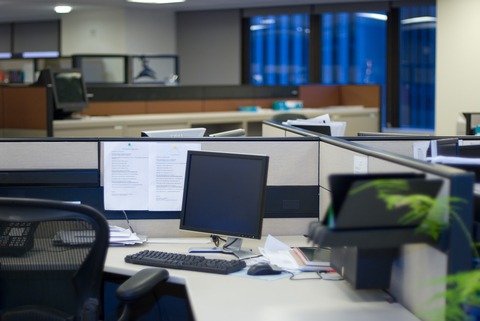As many of you know, there's a lot of office work done in healthcare facilities. In fact, many large U.S. hospitals and healthcare systems have dedicated administrative buildings with office spaces.
So when the pandemic hit, most of those administrative employees started working from home. Now, like many other industries, the healthcare industry is grappling with whether it needs employees in the office all the time.
And if not, what kinds of healthcare office spaces are needed?
Hybrid Office/Home Work Model
From what I can tell, many hospitals and health systems are considering a hybrid office/home work model. Modern Healthcare recently reported that up to 2,000 Dartmouth-Hitchcock employees are going to continue working remotely -- some full-time at home and others rotating in the office with co-workers.
Hospitals and health systems have also realized that by reducing administrative space, they can save money. A lot of money.
In a webinar I listened to recently, Mike McKay, Director of Planning, Design, and Construction for UW Health in Madison, Wis., said that UW calculated they could save $8 million a year by reducing administrative space.
And here's something interesting: HR departments are also now more involved in making decisions about workspace design. Clayton Mitchell, Senior Vice President, Jefferson Real Estate and Facilities, Thomas Jefferson University and Jefferson Health in Philadelphia, said that they are talking about WELL building and LEED certifications to create better spaces for administrative employees.
The Future of Work
Nate Chandler, General Manager, Steelcase Health shared some results of a synthesis of multiple studies conducted by Steelcase that were designed to measure how the Covid-19 pandemic will change the future of work. Not surprisingly, employees' expectations have changed:
- They are more in touch than ever before about what they want from their work and workplace.
- They have new and increased expectations of their employers and workplaces, and want a dramatically different and better experience than the one they left.
Steelcase researchers identify five critical employee needs that will change the overall office work experience:
- Safety: People want to feel safe and be safe.
- Belonging: They want a deeper sense of belonging and have a connection to others.
- Productivity: People want to feel what they do is meaningful.
- Comfort: They seek holistic comfort for their physical, cognitive, and emotional needs.
- Control: People want a greater sense of control over their work lives when they are in the office.
No One-Size-Fits-All Solution
As in clinical spaces, the design of the physical environment is critical the office workplace experience. And that's good news for those of us who have been touting the benefits of healthy buildings.
But there may not be a one-size-fits all solution. Steelcase researchers found five patterns of behavior and attitudes among workers about home office workers that also may influence their workspace expectations:
- Overworked Caretaker: Home office is a nonstop flow of competing demands.
- Relieved Self-Preservationist: Home office is the only place I'm safe.
- Frustrated Creative Networker: Home office is a suspension from normal life and work.
- Autonomy Seeker: Home office is freedom.
- Isolated Zoomer: Home office is a lonely cage.
This is all great stuff to contemplate as administrative employees return to the healthcare office spaces. Who will lead the way?
Want More?
Check out these articles about workplace design post-Covid:
- 5 Trends Driving the New Post-Pandemic Workplace, Gensler blog.
- 4 Ways Businesses Can Thrive in the Hybrid Work Market, D Magazine, June 28, 2021.
P.S. Please do me a favor -- if you liked this post and like this blog, please share it with others by sending them the link or posting it on your Twitter, LinkedIn, or Facebook. Also, don't forget to subscribe, so you'll get emails when new content is posted. Thanks!








